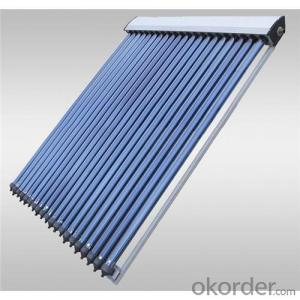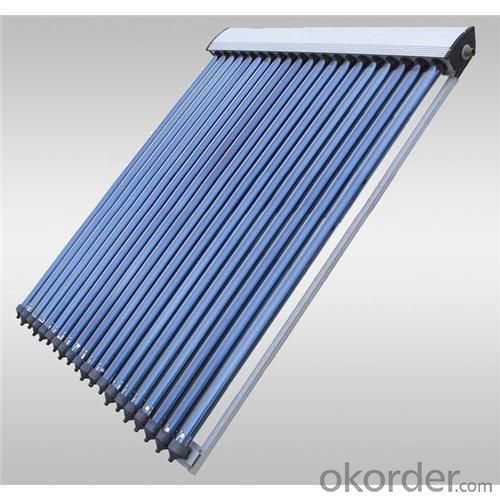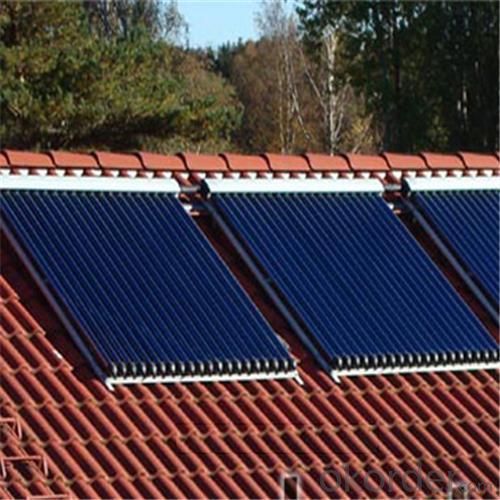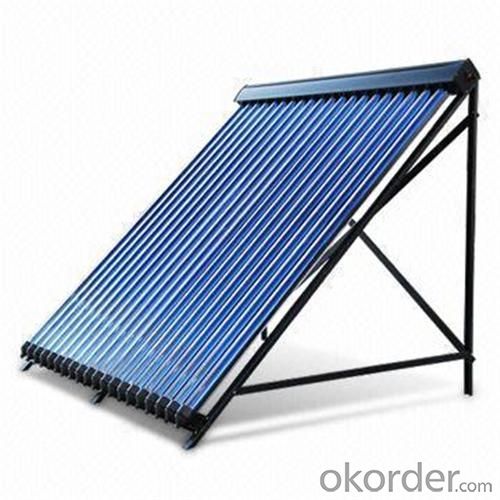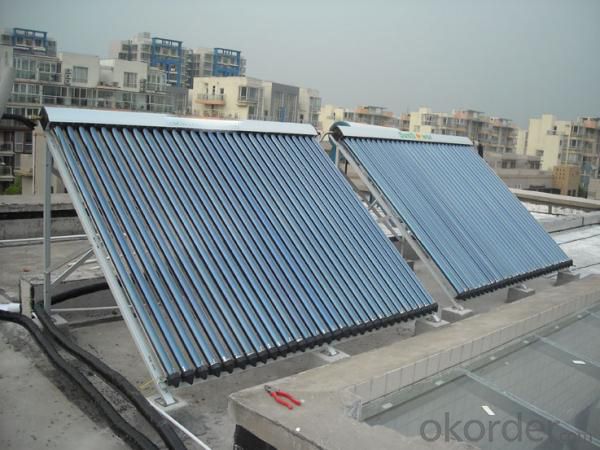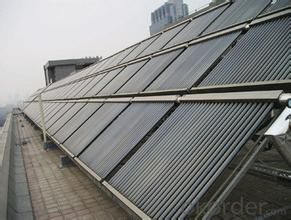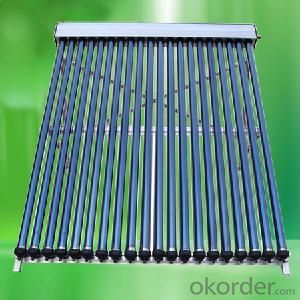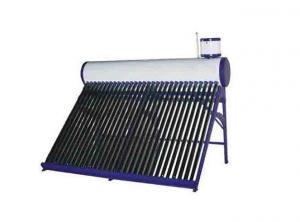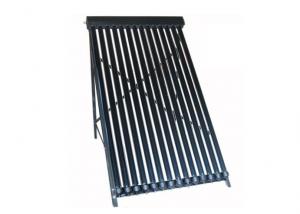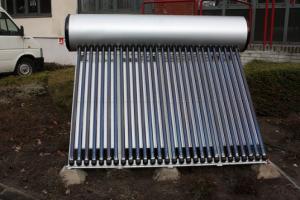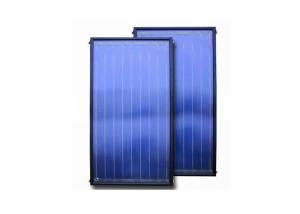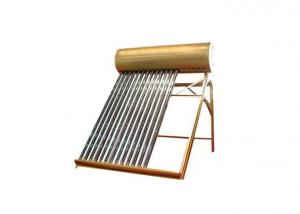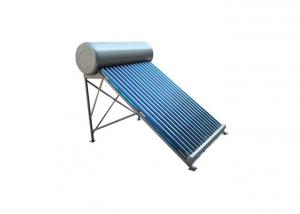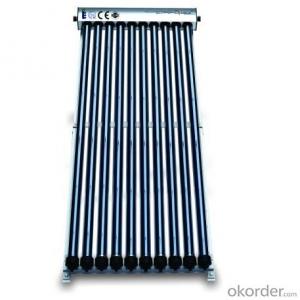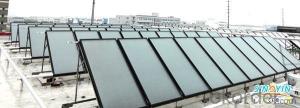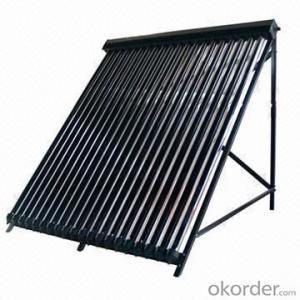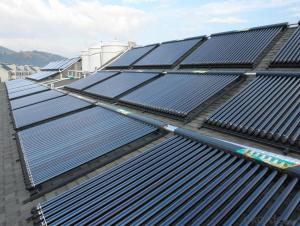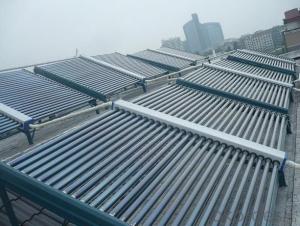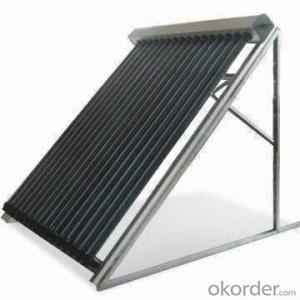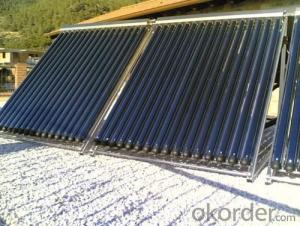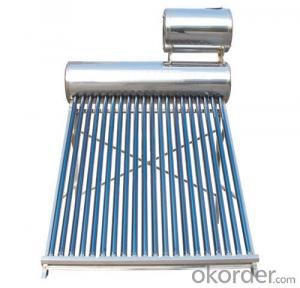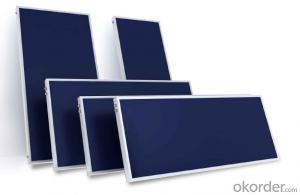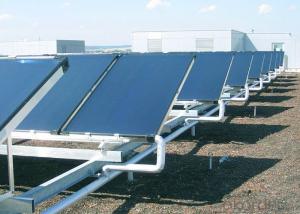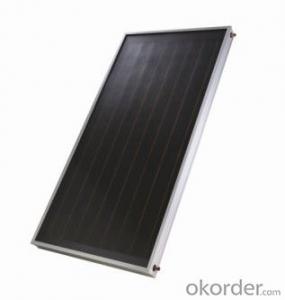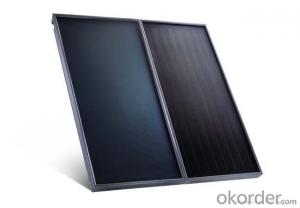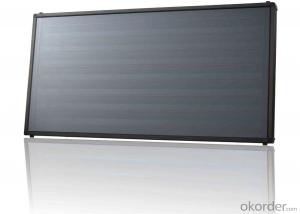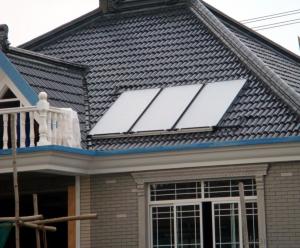Passive Solar Collectors - 20 Tubes Solar Pipes Solar Collectors EN12975
- Loading Port:
- China main port
- Payment Terms:
- TT OR LC
- Min Order Qty:
- 5 set
- Supply Capability:
- 10000 set/month
OKorder Service Pledge
OKorder Financial Service
You Might Also Like
Specification
manifold (inner) | red copper |
manifold (exterior) | aluminum alloy |
glass tube dimensions | 58mm * 1800mm |
daily efficiency | ≥55% |
heat preservation | 72 hours |
hail resistance | 25mm |
max pressure | 7 bar |
coating of vacuum tube | ALN/AIN-SS/CU |
heat pipe | anti-freezing > -35 degree |
certificate | Solar Keymark, EN12975,SRCC |
Serious Product
Models | L*W*H mm | Vacuum tube | Power output | Efficiency | Header mm | Frame | container loading 20FT/40HQ sets | Gross Weight kg |
SHC-8 | 1917*910*133 | 58*1800*8pcs | 939W | 0.668 | Φ35/1.0 | AL alloy | 185/445 | 27 |
SHC-10 | 1917*1130*133 | 58*1800*10pcs | 1189W | 159/385 | 33 | |||
SHC-12 | 1917*1350*133 | 58*1800*12pcs | 1440W | 149/358 | 40 | |||
SHC-15 | 1917*1680*133 | 58*1800*15pcs | 1815W | 120/290 | 49 | |||
SHC-18 | 1917*2010*133 | 58*1800*18pcs | 2191W | 100/242 | 59 | |||
SHC-20 | 1917*2230*133 | 58*1800*20pcs | 2442W | 87/210 | 66 | |||
SHC-22 | 1917*2450*133 | 58*1800*22pcs | 2692W | 83/202 | 72 | |||
SHC-24 | 1917*2670*133 | 58*1800*24pcs | 2943W | 77/188 | 79 |
Packaging & Delivery
Packaging Details: | Exporting Carton with big foaming protection |
Delivery Detail: | In 10-15 days |
Loading Quantity
Model | Tube | Tube Q.T.Y | Loading Q.T.Y/40HQ |
GSC15 | 58*1800mm | 15pcs | 315sets |
GSC18 | 58*1800mm | 18pcs | 265sets |
GSC20 | 58*1800mm | 20pcs | 248sets |
GSC22 | 58*1800mm | 22pcs | 225sets |
GSC25 | 58*1800mm | 25pcs | 200sets |
GSC30 | 58*1800mm | 30pcs | 168sets |
Details of solar collector:
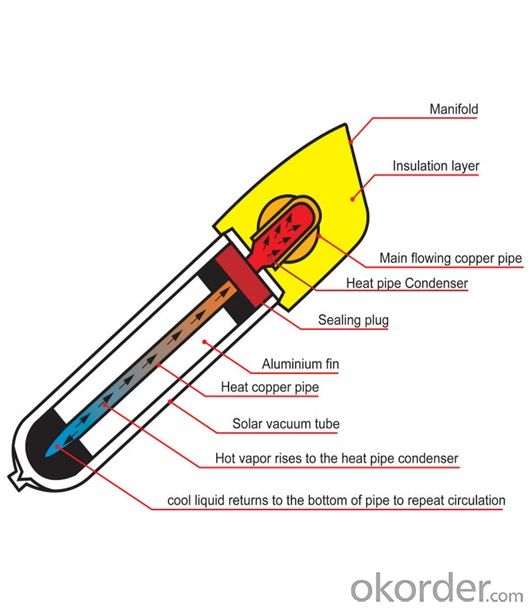
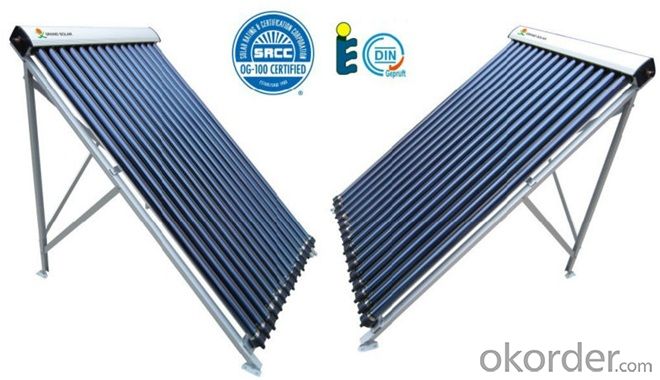
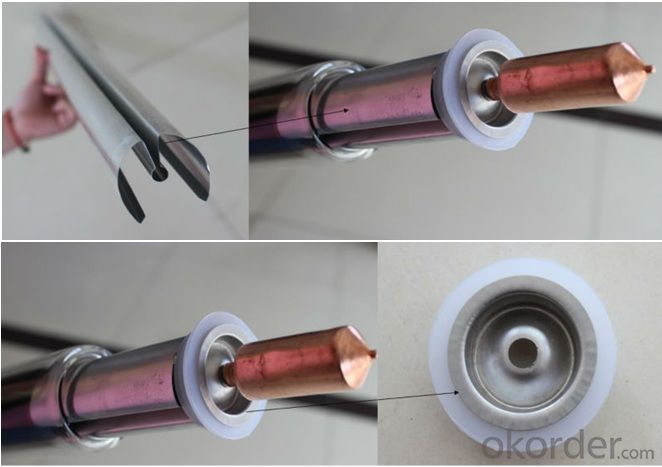
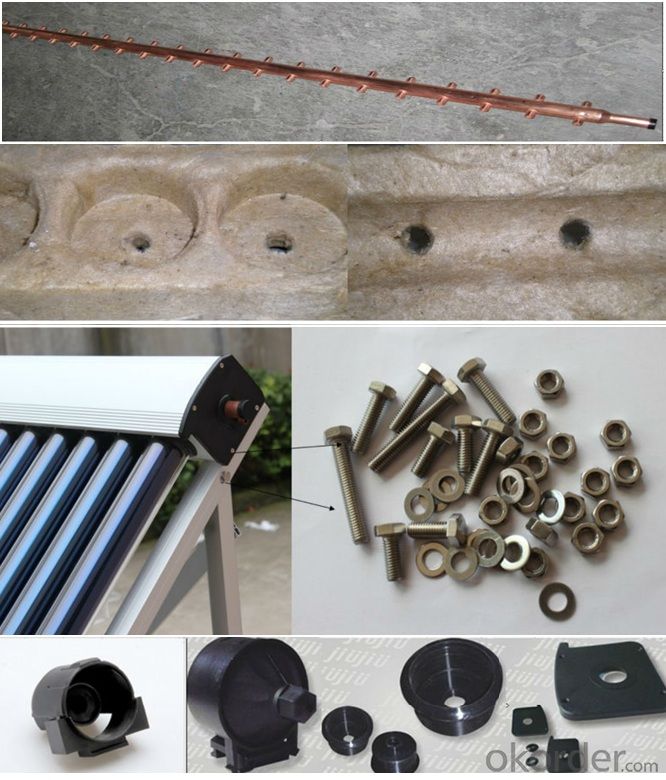
- Q: Can solar collectors be used for heating water for industrial processes?
- Yes, solar collectors can be used for heating water for industrial processes. Solar thermal systems, such as flat plate or evacuated tube collectors, can capture the sun's energy and transfer it to water for various industrial applications like heating, sterilization, and cleaning. This renewable energy source can significantly reduce the dependence on fossil fuels and lower operational costs for industrial processes.
- Q: Can solar collectors be used for heating religious buildings?
- Yes, solar collectors can be used for heating religious buildings. Solar thermal systems can be installed on the roofs of religious buildings to harness the sun's energy and convert it into heat. This heat can then be used for space heating, water heating, or both, reducing the reliance on traditional heating methods and resulting in cost savings and environmental benefits.
- Q: Can solar collectors be used for cooling?
- Yes, solar collectors can be used for cooling through the process of solar-powered absorption refrigeration.
- Q: Can solar collectors be used in automotive manufacturing?
- Yes, solar collectors can be used in automotive manufacturing. They can be employed to generate renewable energy for powering various systems and processes in the manufacturing facilities, reducing reliance on traditional energy sources and decreasing carbon emissions. Additionally, solar collectors can be integrated into electric vehicle charging infrastructure, providing a clean and sustainable way to power electric vehicles during the manufacturing process.
- Q: Are there any restrictions or regulations for installing solar collectors in certain areas?
- Yes, there can be restrictions or regulations for installing solar collectors in certain areas. These restrictions can vary depending on the local government and regulations in place. Some common restrictions include zoning laws, building codes, and homeowner association rules. Zoning laws may dictate where solar collectors can be installed, such as setbacks from property lines or height restrictions. Building codes may require specific permits or inspections for solar collector installations to ensure they meet safety and structural requirements. Homeowner associations may have their own rules regarding the aesthetics or placement of solar collectors. Additionally, some areas may have specific regulations for historic districts or protected landscapes that could restrict the installation of solar collectors. It is important for individuals or businesses interested in installing solar collectors to research and understand the specific restrictions or regulations in their area before proceeding with installation.
- Q: Can solar collectors be used for drying construction equipment?
- Solar collectors, also known as solar thermal collectors, have the capacity to be utilized for the purpose of drying construction equipment. These devices are responsible for absorbing sunlight and converting it into heat. This heat can then be employed for a multitude of purposes, one of which includes the drying of equipment. By employing solar collectors to generate heat, construction equipment can be effectively dried without relying on conventional fuel-based techniques. The process of drying involves directing the heat generated by solar collectors towards the equipment in need of drying. This can be accomplished by either placing the equipment in direct contact with the solar collectors or by utilizing a network of pipes to transfer the heat to the equipment. The heat emanating from the solar collectors has the ability to effectively evaporate any moisture present on the equipment, thus ensuring thorough drying. The utilization of solar collectors for the drying of construction equipment boasts several advantages. To begin with, it is an environmentally friendly choice as it relies on renewable energy derived from the sun. This diminishes the dependence on fossil fuels and aids in the reduction of carbon emissions. Additionally, solar collectors necessitate minimal maintenance and possess a lengthy lifespan, rendering them a cost-effective option in the long run. Nevertheless, it is important to acknowledge that the efficacy of solar collectors for the drying of construction equipment can be influenced by a variety of factors, such as weather conditions, the size and design of the equipment, and the quantity of moisture present. In certain instances, supplementary heating methods may be required to ensure optimal drying. All things considered, solar collectors can prove to be a viable and sustainable solution for the drying of construction equipment, providing an energy-efficient alternative to traditional drying methods.
- Q: Can solar collectors be used for heating large buildings?
- Yes, solar collectors can be used for heating large buildings. Solar thermal systems, which use solar collectors, can efficiently capture and convert sunlight into thermal energy. This energy can then be used to provide heating for large buildings, reducing the reliance on traditional heating systems and decreasing carbon emissions.
- Q: Can solar collectors be used for heating golf courses?
- No, solar collectors are not typically used for heating golf courses. Golf courses require large amounts of heat, and solar collectors are not efficient enough to generate the necessary heat to warm such large areas. Other heating methods, such as gas or electric heaters, are commonly employed for this purpose.
- Q: Are solar collectors suitable for cold climates?
- Yes, solar collectors are suitable for cold climates. While colder temperatures may affect the efficiency of solar collectors, advancements in technology have made them more resilient and capable of capturing solar energy even in freezing conditions. Additionally, proper insulation and tilt angles can optimize their performance in cold climates, making them a viable option for generating renewable energy.
- Q: Can solar collectors be used for heating livestock buildings in winter?
- Solar collectors have the potential to heat livestock buildings during winter. They can utilize sunlight to generate heat through solar thermal systems or solar air heaters. This generated heat can then warm the livestock buildings in winter. By placing solar collectors on the buildings' roofs or walls, the captured solar energy can supplement or replace traditional heating methods like fossil fuel-based systems. This sustainable approach reduces greenhouse gas emissions and offers a cost-effective heating solution. Moreover, solar collectors can be combined with thermal storage systems to ensure a continuous supply of heat, even during low sunlight or nighttime. However, it is crucial to consider the specific heating needs of the livestock, the buildings' size and design, and the local climate conditions. These factors determine the optimal sizing and configuration of the solar collectors for efficient heating.
Send your message to us
Passive Solar Collectors - 20 Tubes Solar Pipes Solar Collectors EN12975
- Loading Port:
- China main port
- Payment Terms:
- TT OR LC
- Min Order Qty:
- 5 set
- Supply Capability:
- 10000 set/month
OKorder Service Pledge
OKorder Financial Service
Similar products
Hot products
Hot Searches
Related keywords
